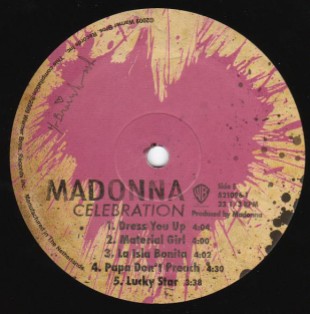Have you sold your prized collection? Books? Records? China elephants? Anything?
Six years ago I sold my record collection. I used to say it was a life’s work, a library of great music, mainly mainstream rock but with loads of indie, classical, some jazz and some weird stuff that just seemed to appeal. Packed into sixty boxes standing in the middle of the room I wondered if I had been sick to have accumulated all this “stuff”. My wife and I moved from our house where I had a music room to house my music collection of 5000 plus records and CDs (probably more than 4000 vinyl records.) When we moved the records and memorabilia (posters, displays, and other music-related things) went into storage for a time. I would have a fifteen minute walk from home to the storage rooms in a converted garage under a block of flats. I would make the trek perhaps once a month to root around in the boxes. Almost every record I pulled out held an association. But who could I tell the stories to when I was alone in that sterile environment, unable to play the record or sit and contemplate the cover art. In addition the storage was expensive and the cost was not offset by any pleasure so I decided to sell the majority of the records.
I had lots of valuable records–a fully autographed copy of “Love Me Do / P.S. I Love You” on the red Parlophone label that I always said would be my old age pension, and both stereo AND mono copies of The Beatles’ “Please Please Me” LP with the original black and gold Parlophone labels. I also had hundreds of autographed albums by artists such as Björk, Oasis, The Ramones, The White Stripes, and quite a few rare promotional records. I offered friends a chance to buy some of these before I sold the remainder of the collection.
Then one May day in 2013 I sold the lot: records, posters and memorabilia. All collected and driven away from the storage units I had been renting. All I had to do was sweep them out and terminate my contract. I was strangely unmoved after everything had gone.
However, to be honest, it wasn’t true that EVERYTHING had gone–I kept my collections of record cover art by Andy Warhol, Peter Blake, Banksy, Klaus Voormann and Damien Hirst. So there was still a collection or sorts, though dramatically downsized.
A month or so ago I read of a book that I felt I had to read. Dave Haslam, journalist, author, and ex DJ, at Manchester’s Hacienda Club and other places has written “A Life in Thirty-Five Boxes”, subtitled “How I Survived Selling My Record Collection”.* Well, having sold my own record collection, I obviously had to read it.

The book opens with a general discussion about collecting and the (subtle) difference between collecting and hoarding. Haslam suggests that orderly storage and possibly cataloguing mark the collector, while hoarders just, well, hoard. He also suggests that there is another category of collector–a person who can’t, or doesn’t, throw things away. So someone who has shelves of books might be called a collector despite there never having been a conscious idea to collect. Haslam illustrates the idea of a record collector by describing a number of collectors. One collects José Feliciano records, others are DJs, three women DJs/collectors are mentioned an a major section of the book is devoted to a French colelctor of jazz records. Collectors can be categorised into “completists”, those searching for a particular record, music style, record label or any other aspect of recorded music. He insists that it is a love of music that underlies the collecting.
Haslam had accumulated 4,500 records in his 40-year career as a DJ. He decided to sell them in September 2015. Why did he eventually decide to sell? He asks the question towards the end of the book–answering it by saying that he’d stopped using vinyl records when DJ-ing, preferring self-recorded CDs as he’d had “incidents” affecting some records while he was DJ-ing. However, I don’t really buy this explanation. He mentions that his marriage “had hit a difficult phase and I felt isolated”. He does say, though, that he was unsure of the real reason for selling his records. He states “you can drift apart from someone and never quite work out why”. But he doesn’t say this was the reason for selling, though he used the money earned from the sale for an “extended stay in Paris”. The inference is that he went alone–divorced?
Haslam denies any post-sale depression, he rather felt unburdened. He had come to regard the records as “baggage from the past”. He says the “letting go was also exhilarating. I realised I wasn’t just surviving selling my records collection; I was surviving by selling my record collection”! He kept his books and memorabilia, so he wasn’t totally “unburdened”.
So, does “A Life in Thirty-Five Boxes” explain anything about me? It tells me that collecting is a common human endeavour and that there are many ways to collect records. I sold my collection as I didn’t have anywhere to store it and for purely financial reasons. I needed the money to help buy a flat. I didn’t feel depressed or lonely, nor was I exhilarated by ridding myself of a lifetime’s collection. Like Dave Haslam I kept a small part of the collection, which gives me joy to this day.
*Dave Haslam,. A Life in Thirty-Five Boxes: How I Survived Selling My Record Collection. Manchester, U.k., Confingo Publishing. 2019. pp53.
















